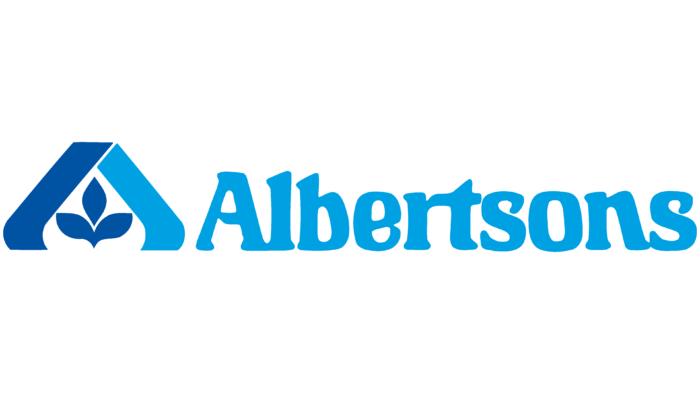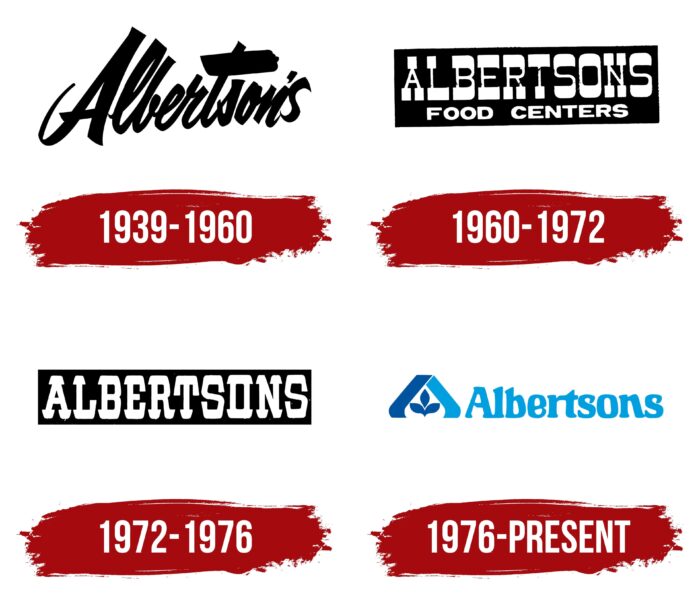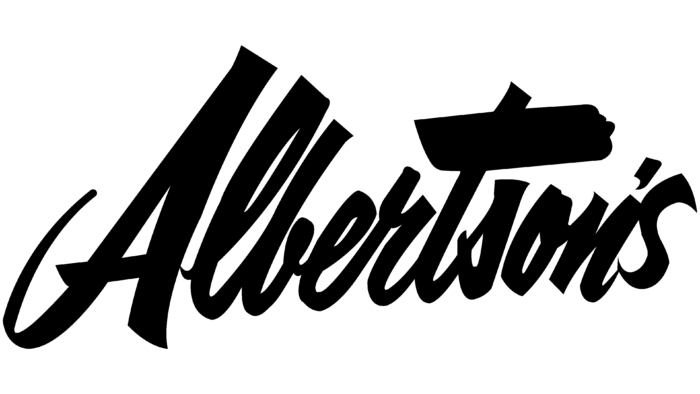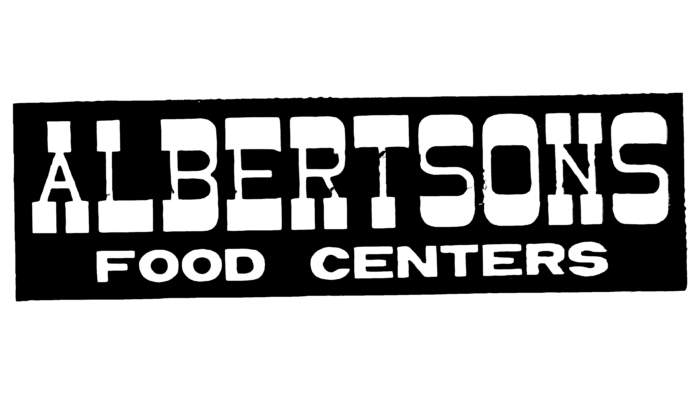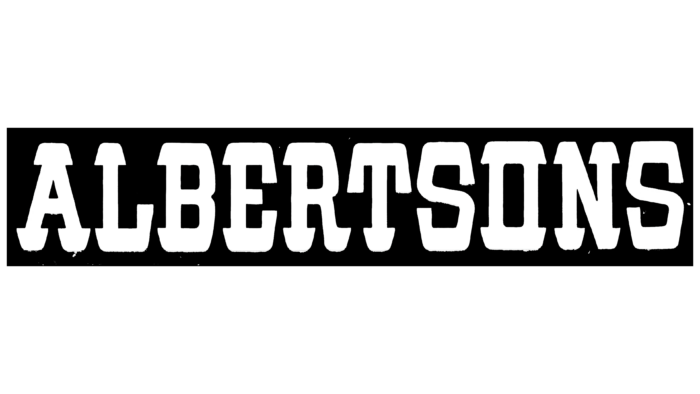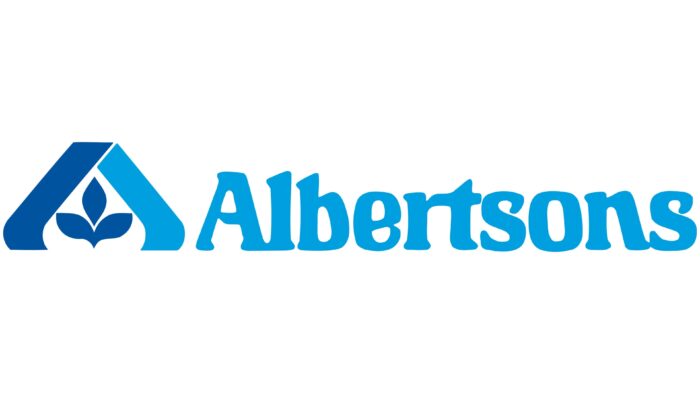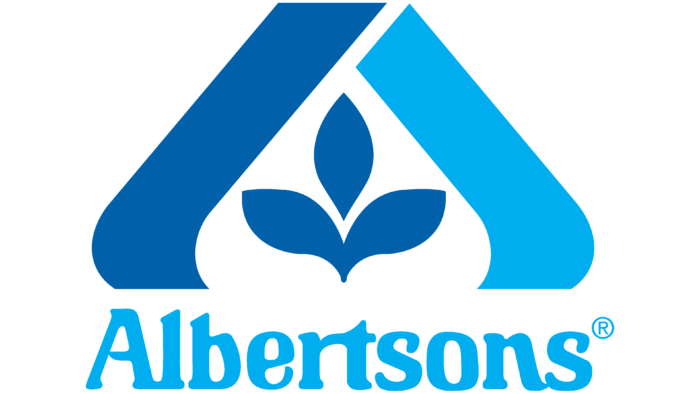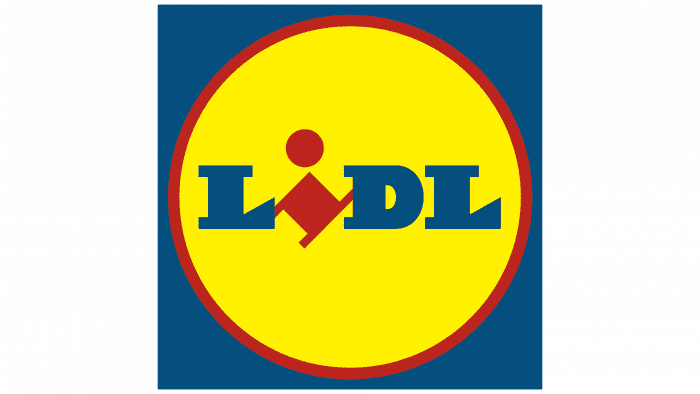Under the company’s protection, the client’s home will flourish, the Albertsons logo promises. The emblem guarantees safety concerning two main components: nutrition and health. Elements hint at the self-production of the goods being sold.
Albertsons: Brand overview
| Founded: | July 21, 1939 |
| Founder: | Joe Albertson |
| Headquarters: | Boise, Idaho, U.S. |
| Website: | albertsons.com |
Meaning and History
In 1939, aspiring businessman Joseph Albert Albertson opened his first store, drawing on his experience as a manager at Safeway. It was considered very large for the time. It had several innovations, including a magazine shelf, a doughnut machine, and its bakery. The supermarket was located in Boise – where Albertsons is now headquartered. The company remains faithful to its home state, but at the same time, is actively expanding in all directions, for which it is buying competing retail chains in other regions.
In the 2000s, the reverse process began: owners closed inefficient stores and liquidated entire divisions. After a brief decline, the food and drug retailer regained its position. It is now the second-largest supermarket chain in the U.S. by several locations.
The Albertsons brand has been known since 1939. Its logos have changed as often as generations of customers have changed because it has always tried to keep up with modern trends. But there’s continuity in the design: almost all of its emblems contain its name in vintage script. Even the current version mimics the style of signage from an earlier era.
1939 – 1960
One of the first logos contained handwritten “Albertson’s” in black. The uneven width of the lines made it appear as if it had been drawn with a brush. The word was slightly raised: the right side went up, forming a diagonal. In another version, the brand name was complemented by the phrase “food center,” which took up two lines on the right side. A bold, rounded, sans serif font was used for it. Inside each letter, fine white lines were drawn, repeating the shape of the strokes.
1960 – 1972
The revised version contained the same lettering as before but in a different design. The word “ALBERTSONS” lost its apostrophe, and all letters were converted to upper case. A geometric typeface replaced the handwritten typeface with rectangular serifs. It was high-contrast because the thickness of lines was sharply differentiated: all upper and lower strokes were disproportionately wide.
As for the phrase “FOOD CENTER,” it was shifted down one line and consisted only of capital letters. The font chosen was round bold grotesque. All inscriptions were white and contained within a black rectangle with a light-colored border. This form was designed specifically for signs on storefronts.
1972 – 1976
After starting a partnership with Skaggs, the Albertsons retail chain updated the logo after a while. It became simpler because the words “FOOD CENTER” disappeared. The remaining name of the brand was changed: the designers used a new font for it, this time more proportional. All lines are almost equal in thickness. The serifs at the top and bottom acquired a triangular shape. Almost all the letters had them, even the “O.” The only exceptions were the two “S’s” resembling figure eights.
1976 – today
In the late 1970s, Landor Associates redesigned the Albertsons logo, changing it beyond recognition. The designers chose a slightly modified version of the Introspect font with the letters touching each other. All but the first “A” was converted to lower case. A new element appeared next to it: three leaves covered by a dome of two curving strips. The left side of the design is dark blue, the right side and the word “Albertsons” are painted blue.
Albertsons: Interesting Facts
Albertsons is a major player in the U.S. grocery and pharmacy market, with a history influencing how we shop for food and essentials.
- Beginning: Joe Albertson opened the first Albertsons in Boise, Idaho, on July 21, 1939. It was known as Idaho’s biggest and finest food store at the time, thanks to Joe’s focus on innovation and customer service, which spurred rapid growth.
- Retail Innovations: Albertsons introduced several now-common features early on, like magazine racks and freezers for frozen foods, enhancing the shopping experience.
- Growth through Mergers: The company expanded by merging with other companies, notably joining Safeway Inc. in 2015, significantly increasing its presence across the U.S.
- Private Ownership: A group led by Cerberus Capital Management bought Albertsons in 2006, making it a private company. However, it has made moves to go public again, including a significant attempt in 2020.
- Store Brands: Albertsons sells various store brands, including the O Organics line, offering quality and value that compete with national brands.
- Pharmacy Services: Beyond groceries, Albertsons provides comprehensive pharmacy services, such as prescription fulfillment, immunizations, and wellness products.
- Community and Sustainability: Albertsons is active in community support and sustainability, engaging in hunger relief, health and wellness initiatives, and efforts to reduce environmental impact.
- Embracing Technology: The company keeps up with technology, offering online shopping, delivery, and pickup services and testing “smart carts” to improve shopping.
- Wide Reach: Albertsons operates under various names, including Safeway, Vons, and Jewel-Osco, allowing it to serve diverse customer needs and preferences across different regions.
- Local Economic Impact: With stores nationwide, Albertsons is a key employer and contributes to local economies by providing jobs and paying taxes.
From a single Idaho store to a national grocery powerhouse, Albertsons’ story highlights its innovation, dedication to customer service, and ongoing efforts to stay relevant in a changing market.
Font and Colors
The floral pattern on the company’s logo symbolizes its exceptional approach to work. It shows that natural and organic products are available in the supermarkets, even though they are not the basis of the assortment. The emblem also speaks to the safety of food and medicine. And because a protective dome carefully covers the three leaves, it is a clear hint of concern for nature. In addition, the design resembles a stylized “A” – the first letter in the word “Albertsons.”
The inscription looks very unusual as if a custom set of glyphs was designed for it. But it does exist: it’s called Introspect and is the work of Phil Martin. Alphabet Innovations launched it in 1971, and a few years later, Albertsons chose it for its logo. Of course, the designers had to slightly adjust the shape of the letters and round the corners. But behind all the changes, you can still see the original Introspect.
The main feature of the font is that the letters are touching each other, as in bad printing. The strokes are disproportionate and asymmetrical, and some elements are slightly skewed. The ends are decorated with rounded serifs. As Phil Martin himself noted, this typeface became “the face of the supermarket.” The fact is that it started to be used by food packaging designers in the U.S. and abroad. And the chain of stores Albertsons also followed their example because the smooth and expanding strokes look “appetizing.”
The logo color scheme is based on two shades: dark blue (#009FE0, Pantone Reflex Blue C) and light blue (#009FE0, Pantone Process Blue C). And white serves only as a background for the pattern and lettering.
Albertsons color codes
| Spanish Sky Blue | Hex color: | #009fe0 |
|---|---|---|
| RGB: | 0 159 224 | |
| CMYK: | 100 29 0 12 | |
| Pantone: | PMS 801 C |
| Medium Electric Blue | Hex color: | #00539f |
|---|---|---|
| RGB: | 0 83 159 | |
| CMYK: | 100 48 0 38 | |
| Pantone: | PMS 2945 C |
